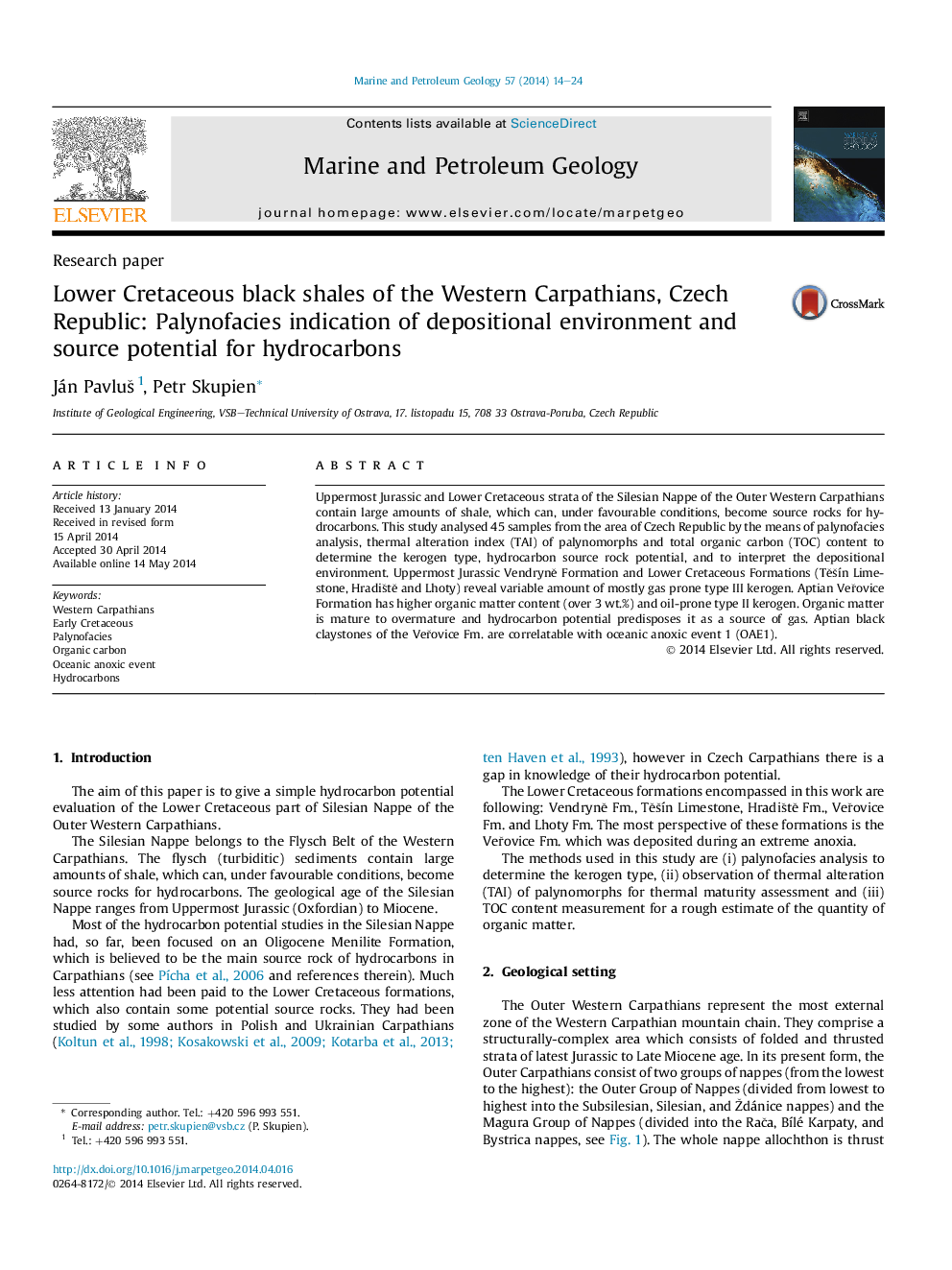| Article ID | Journal | Published Year | Pages | File Type |
|---|---|---|---|---|
| 6435330 | Marine and Petroleum Geology | 2014 | 11 Pages |
â¢Palynofacies and TOC of the Lower Cretaceous formations of the Western Carpathians.â¢The global OAE1 is identified in the Silesian Unit.â¢Source rock potential is identified based on kerogen types and thermal alteration of organic matter.
Uppermost Jurassic and Lower Cretaceous strata of the Silesian Nappe of the Outer Western Carpathians contain large amounts of shale, which can, under favourable conditions, become source rocks for hydrocarbons. This study analysed 45 samples from the area of Czech Republic by the means of palynofacies analysis, thermal alteration index (TAI) of palynomorphs and total organic carbon (TOC) content to determine the kerogen type, hydrocarbon source rock potential, and to interpret the depositional environment. Uppermost Jurassic VendrynÄ Formation and Lower Cretaceous Formations (TÄÅ¡Ãn Limestone, HradiÅ¡tÄ and Lhoty) reveal variable amount of mostly gas prone type III kerogen. Aptian VeÅovice Formation has higher organic matter content (over 3 wt.%) and oil-prone type II kerogen. Organic matter is mature to overmature and hydrocarbon potential predisposes it as a source of gas. Aptian black claystones of the VeÅovice Fm. are correlatable with oceanic anoxic event 1 (OAE1).
